Stubbornness will not bring to good: SAU Sturer Emil
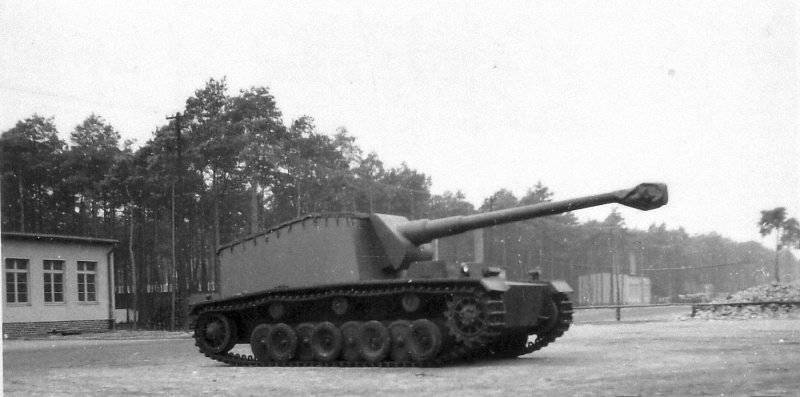
At the beginning of 1940, such requirements resulted in work to determine the appearance of a promising anti-tank self-propelled artillery. The country's command requested the creation of two SAUs armed with 105-mm and 128-mm cannons. Such weapons should have ensured the guaranteed defeat of all existing tanks that are in service with European countries, and also had a certain reserve in the direction of the destruction of tanks of the near future. However, after a few months, it was decided that one self-propelled gun was enough. The 128-mm self-propelled gun program was closed, and as a result of the second program a Sau Dicker Max. In the first months of the next 1941, the German command stopped actively preparing for war with Great Britain. The actual goal was the Soviet Union. A few days before the attack, both of the experienced Dicker Max self-propelled guns went to the troops for trial operation. About the project self-propelled guns with 128-mm guns are no longer remembered.
But then came the day the operation "Barbarossa" began. Wehrmacht tanks went on the offensive and met with very uncomfortable opponents. These were Soviet T-34 and KV tanks. The armament and protection of the German tanks PzKpfw III and PzKpfw IV made it possible to fight with the medium T-34s. But against heavy HFs with appropriate reservations, their guns were powerless. I had to attract Aviation and anti-aircraft gunners with their 88-mm FlaK 18 guns. In addition, self-propelled guns with 105-mm guns showed their combat effectiveness. It was urgent to strengthen self-propelled anti-tank artillery.
It was then that the almost forgotten developments on the ACS with a gun of the 128 caliber of millimeters came in handy. Just a few weeks after the start of the war, Rheinmetall and Henschel were assigned the task of developing a complete self-propelled gun. It is worth noting that the development of Dicker Max was relatively simple - the gun of the right caliber was installed on the almost unchanged chassis of the PzKpfw IV tank. With the new SAU, the situation was worse. First of all, the weight of the gun affected. The PaK 40 gun weighed more than seven tons. Not every German-made armored chassis could draw such a “burden,” not to mention recoil. I had to go back to the old projects. The basis for the new self-propelled guns made experimental tank VK3001 (H), which at one time could become the main medium tank in Germany.
The VK3001 (H) chassis suspension was quietly able to withstand the design loads when shooting with a 128-mm gun. However, the experimental tank had insufficient dimensions. It was possible to install an armored cabin with a tool on it, but in this case there was almost no space left for the crew. About any ergonomics, even tolerable, there could be no question. I had to urgently lengthen the original chassis. To do this, the car was boosted and, as a result, the transmission was rearranged. The engine was left unchanged - Maybach HL116 300 horsepower. The structure of the chassis had to introduce two additional support rollers on each side. In view of the Knipkamp system applied on the VK3001 (H) tank, this did not give a particularly large gain in the length of the bearing surface, although it helped to correct the alignment of the entire self-propelled gun.
The first (they are, as it turns out, and the last) copies 128-mm self-propelled gun, has received the official name of 12,8 cm PaK 40 L / 61 Henschel Selbstfahrlafette auf VK3001 (H) and the unofficial nickname Sturer Emil ( «Stubborn Emil"), planned to remodel of the manufactured chassis tank VK3001 (H). Therefore, the booking of self-propelled guns remained the same: the forehead and the sides of the hull with a thickness of 50 and 30 millimeters, respectively. In the rear of the hull, right on its top plate, mounted armored wheelhouse. It was assembled from steel sheets of the same thickness as the hull sheets - 50 and 30 mm. The front panels of the hull and the felling only five centimeters thick were few. For this reason, the “Stubborn Emil” self-propelled guns received additional protection in the form of tracked track sections suspended on the hull foreheads and felling. For several reasons, it was not possible to evaluate the effectiveness of such an impromptu booking.
On the central axis of the machine was installed 128-mm PaK 40 gun with a barrel length of 61 caliber. The system of its mountings allowed for horizontal guidance within seven degrees from the axis. The vertical guidance sector, in turn, was significantly larger - from -15 ° to + 10 °. Such a divergence in the vertical guidance angles had a simple and understandable basis. To raise the barrel of the gun above ten degrees did not allow its large breech, rested against the floor of the crew compartment. As for the reduction of the trunk, it was limited only by the front part of the machine body and expediency. The loaded ammunition of the gun was 18 shells. It is sometimes mentioned that, thanks to the long-range confident defeat of most Soviet tanks, the Sturer Emil could work in tandem with a truck carrying projectiles. However, it is unlikely that such a "tactical scheme" was used in practice - unlike at least somehow booked by SAU, a truck with ammunition is not protected at all and is a very attractive target.
The crew of the 128-mm self-propelled gun consisted of five people: a driver mechanic, a commander, a gunner, and two loaders. The jobs of four of them were in the wheelhouse, so an increase in the size of the chassis was more than necessary. In case of unforeseen circumstances, as well as to combat the enemy’s infantry, the crew had a MG 34 machine gun, several MP 38 / 40 machine guns and grenades.
At the Henschel plant, six VK3001 (H) tank chassis were idle. Two of them became platforms for the manufacture of new self-propelled guns. Therefore, even taking into account serious alterations of the hull, the manufacture of the Sturer Emil did not take long. The first copy was ready by the autumn of 41, and the second had to wait until spring of the next year. The first thing two prototypes went to the landfill. There they showed good fire performance. However, large caliber and remarkable armor penetration indicators were compensated by low engine power and the low mobility caused by it. Even on the “Stubborn Emily” highway, as if justifying their nickname, they did not accelerate faster than twenty kilometers per hour.
After the field tests, both SAU Sturer Emil were sent to the front for testing in real combat conditions. The test-gunners became the soldiers of the 521 th battalion of anti-tank self-propelled guns. Almost immediately after the arrival, SAU received another nickname, this time “personal”. The soldiers called them "Max" and "Moritz," in honor of the two hooligan friends from the poem by Wilhelm Bush. Probably the reason for the emergence of such nicknames were the constant breakdowns that were plagued by both "Stubborn Emile." Nevertheless, these self-propelled guns spoiled life not only to mechanics. 128-millimeter guns really reliably hit all Soviet tanks, including heavy ones. The difference was only in the range of the shot. According to reports, "Max" and "Moritz" destroyed at least 35-40 Soviet tanks.
In the poem of V. Bush, the fate of the hooligans was not at all bright: they were ground at the mill and fed to the ducks, to which no one was upset. With self-propelled "Max" and "Moritz" happened something similar, but adjusted for the features of the war. One of the SPGs was destroyed by the Red Army soldiers in the middle of 1942. The second reached Stalingrad, where it became a trophy of Soviet soldiers. Since 1943, one of the "Stubborn Emil" has participated in exhibitions of captured German technology. On the barrel of his gun counted 22 white rings - by the number of armored vehicles destroyed. You can imagine the reaction of the Red Army on the trophy with such a battle history.
Perhaps the soldiers of the Red Army, and especially the tankers, would only have been delighted to learn the further fate of the 12,8 project cm PaK 40 L / 61 Henschel Selbstfahrlafette auf VK3001 (N). A weak engine, over-weighted design, a small ammunition, and insufficient gun pointing angles caused doubts in the expediency of serial production of ACS. In addition, the year was already 42-th year - it was necessary to decide the fate of a heavy tank PzKpfw VI Tiger. Since the company "Henschel" could not simultaneously collect and tank, and self-propelled guns, its leadership, together with the command of the Wehrmacht decided to begin mass production of "Tiger". The Sturer Emil project was closed and no longer resumed, but this did not cancel the need for an anti-tank self-propelled gun.
On the materials of the sites:
http://pro-tank.ru/
http://achtungpanzer.com/
http://achtungpanzer.eu/
http://armor.kiev.ua/
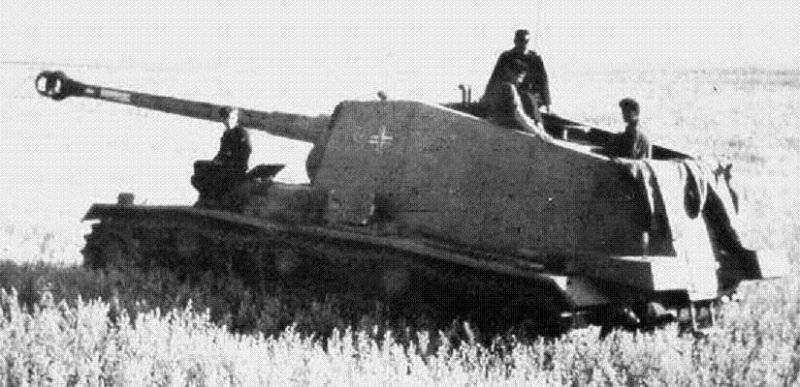
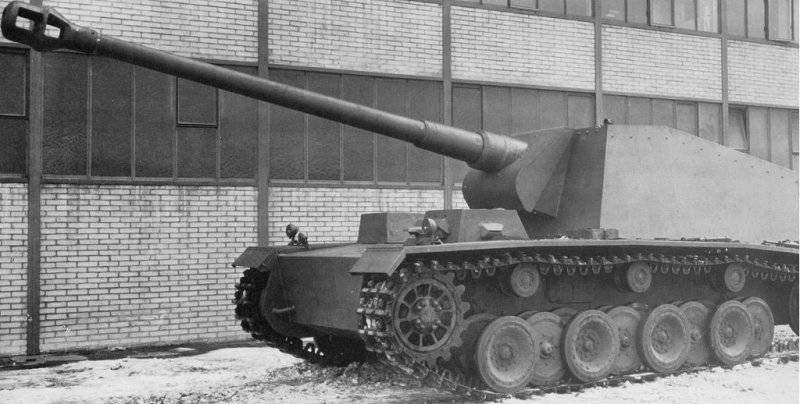
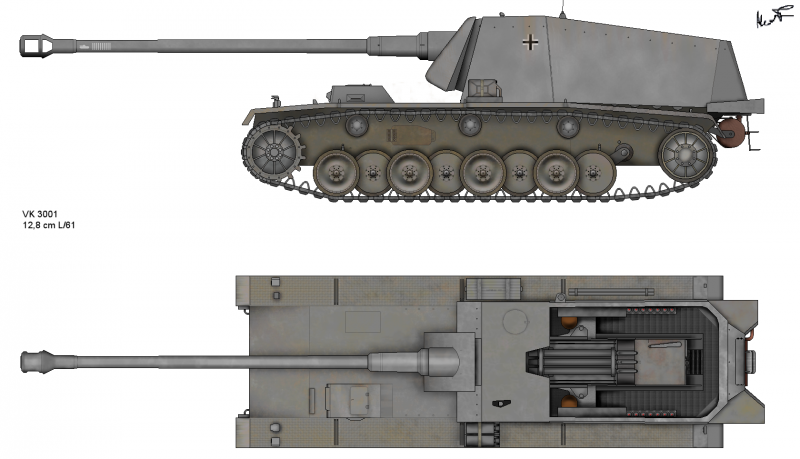
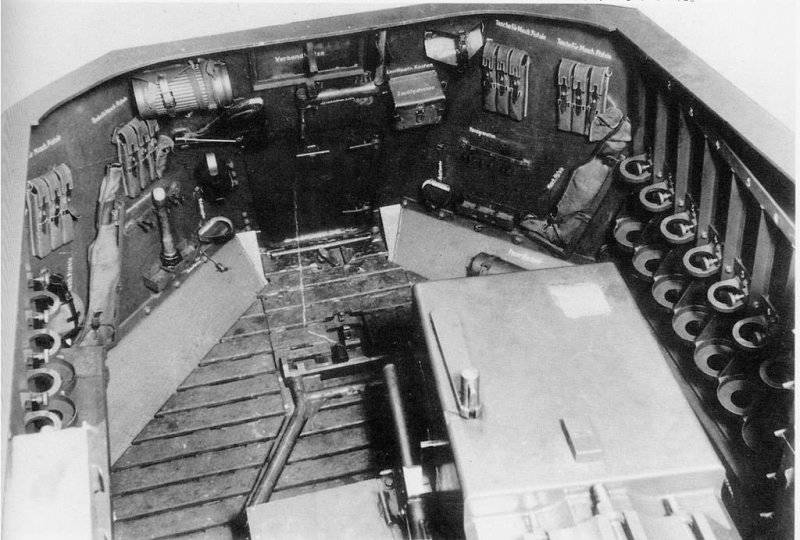
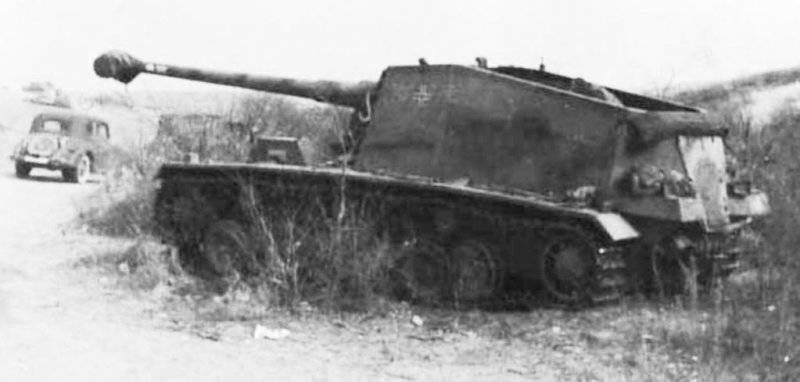
Information